
Five College of Science researchers presented five-minute elevator pitches on their products to the Science Council on Sept. 28, showcasing the Innovation Postdoc program that helps move research discovery closer to commercial production.
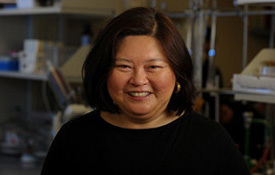
Mayland Chang, a research professor in chemistry and biochemistry, presented her laboratory’s work on novel drugs for the treatment of medical needs such as stroke, traumatic brain injury (TBI), and chronic wounds in patients with diabetes. These conditions affect hundreds of thousands of people in the United States, but few treatments are available because the injury and repair mechanisms are poorly understood and because less than two percent of small molecule drugs can cross the blood-brain barrier. Notre Dame researchers study the mechanisms in animal models and use water-soluble drugs that can cross the barrier to target the injury mechanism in ways that do not inhibit the repair mechanism.
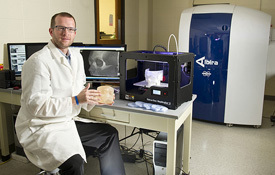
Matthew Leevy
Matthew Leevy, director of biological imaging at the Notre Dame Integrated Imaging Facility, presented a solution to assist endoscopic surgery for people with sinus conditions. The approach uses data from CT scans and X-rays to produce accurate, patent-specific models from a three-dimensional printer that doctors can use for practice surgeries. Up to 15 percent of the six million sinus surgeries performed each year in the United States are unsuccessful, often because of unforeseen problems navigating the sinuses with endoscopic equipment. The three-dimensional model can indicate whether a procedure will be routine or complicated. Success with the solution could save the U.S. health care system $2.7 billion a year.
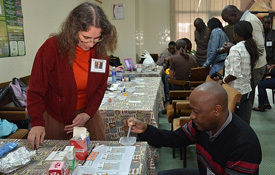
Marya Lieberman gives a PAD
demonstration in Kenya
Marya Lieberman, associate professor of chemistry and biochemistry, presented a cheap, easy way to identify counterfeit drugs using printed paper test cards. Counterfeit antibiotics and medications for TB, diabetes and heart conditions are a life-and-death problem in developing countries that don’t have access to sophisticated laboratory testing. Counterfeits also are a problem with lifestyle drugs, such as Viagra, Cialis and Levitra, in the West. Lieberman said her aim is to provide low-costs tests in the developing world where environmental and technological limits make Western-style testing impractical. The cards cost 17 cents each, and pharmaceutical companies are interested in the project because it could protect their products.
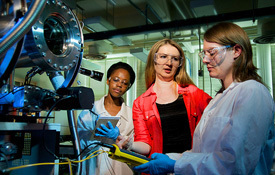
Sylwia Ptasinska works with students
Sylwia Ptasinska, assistant professor of physics, presented a solution for sterilizing medical instruments that does not require long exposure to high-temperature steam. The tools, developed in collaboration with the Harper Cancer Research Institute, use cold plasmas to kill bacteria and sterilize equipment. The laboratory uses nitrogen and air for its plasma, unlike other products that use more expensive noble gases. So far the project has produced plasma with a diameter of one centimeter, ideal for small tools like those in a dentist’s office, and the laboratory is working with engineers to adjust the size for sterilizing larger equipment.
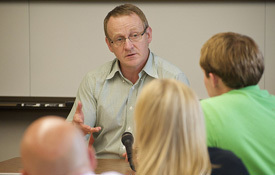
Mark Suckow
Mark Suckow, assistant vice president for research, strategic initiatives director and director of the Freimann Animal Care Facility, presented a personalized cancer treatment for pets. Suckow, a board-certified veterinarian, said that more than one million dogs a year are diagnosed with cancer in the United States, and half of the dogs over age 10 will die of cancer. Current treatments, including chemotherapy and radiation therapy, require owners to travel long distances because ordinary veterinarians do not provide them. Suckow helped form the company Torigen to market VetiVax, a cancer vaccine specific to the type of cancer in the pet. The treatment involves three doses after surgical removal of the tumor, and it can be performed by the pet’s usual veterinarian.
Originally published by at science.nd.edu on September 30, 2013.